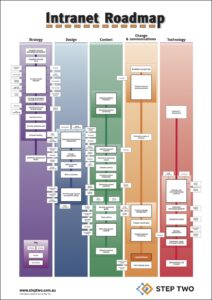
Filed under: Intranets
Most intranets are maintained via mix of centralised and decentralised authoring practices, with key pages closely managed and the rest maintained by individual business areas. With the overarching goal of delivering accurate, trusted content to employees, it becomes vital to provide effective support to decentralised authors as a key part of effective intranet governance.
Over the years, the Intranet & Digital Workplace Awards have surfaced many practical ways of supporting authors, and recent winners are no exception.
The starting point is to provide clear guidance to authors on:
- how the intranet is designed
- their roles and responsibilities
- what standards must be met
- how to create and maintain pages
All of this should be brought together into some form of “author hub” or “editor hub”, as part of the “about the intranet” section on the intranet itself. The MAN Energy Solutions intranet provides a good example of what this should cover.

The entry page for a comprehensive resource for authors publishing to #CU.LIVE, the intranet. Screenshot courtesy of MAN Energy Solutions.
Let’s dig further into the detail of how to deliver support and guidance to intranet authors:
1. How the intranet is designed
All but the most ‘free-range’ intranets should have a consistent style and structure for how content is created and presented. This may include:
- page templates
- use of page elements and paragraph styles
- writing guidelines and styleguide
Duke Energy’s intranet provides a comprehensive ‘visual guide’ that shows how the different page elements are used, as part of their overall authoring training.
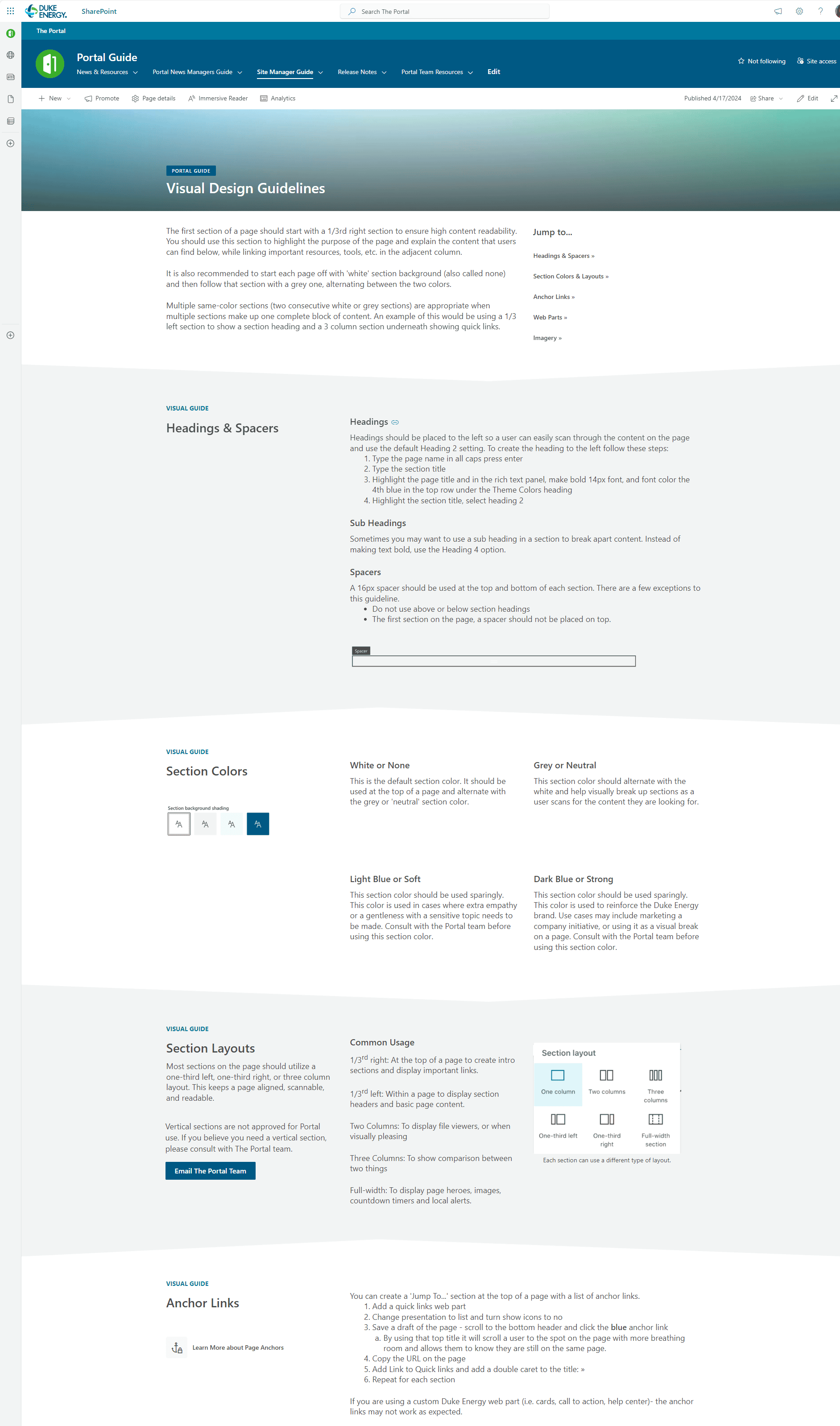
This visual guide to page elements helps authors to assemble effective intranet pages. Screenshot courtesy of Duke Energy
NZ Super Fund’s best-practice intranet project created a set of colour-coded templates that distinguished between ‘time-bound’ communications vs ‘evergreen’ content. Authors are given clear guidance on when to use each, as shown below.
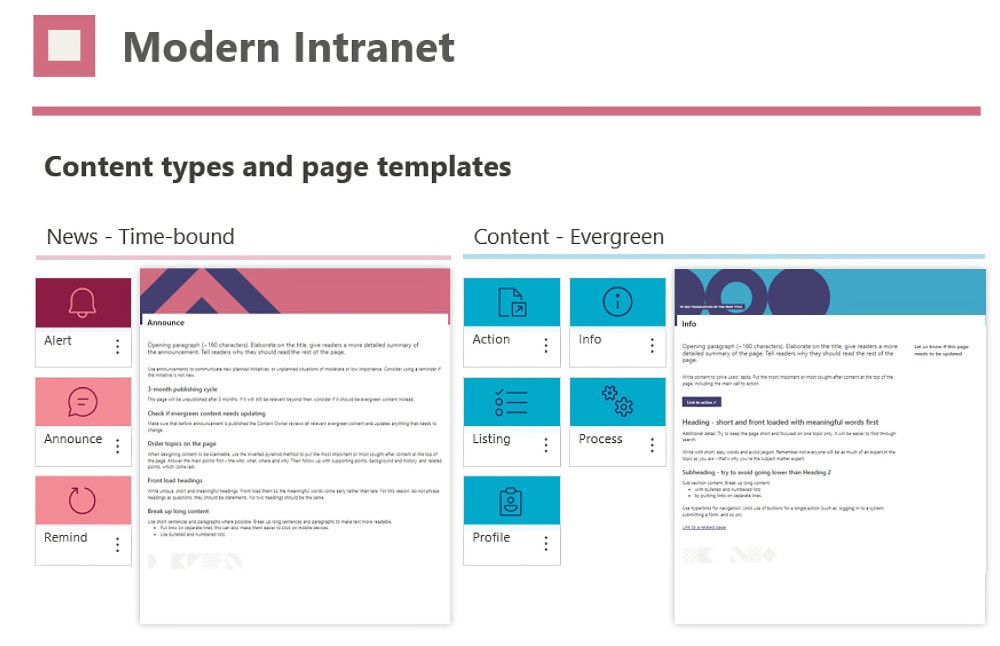
A set of colour-coded templates is provided to authors, distinguishing between comms and content. Screenshot courtesy of NZ Super Fund.
2. Roles and responsibilities
A key element of intranet governance is clearly-defined roles and responsibilities for everyone involved, from the central team through to decentralised content publishers.
This sets expectations in terms of:
- who is responsible for individual content pages
- who are the ‘business owners’ of intranet sections
- how often content should be reviewed and updated
- what activities fall into the domain of the central intranet team
- how all the participants involved in the management of the intranet can productively work together

This page outlines the expectations and responsibilities of intranet authors. Screenshot courtesy of Duke Energy.
There are many ways of defining and communicating intranet responsibilities, and further real-world examples can be found in the article Creating accountability for your intranet with the right structures and roles.
3. What standards must be met
Authors must consider a range of standards when creating pages, including:
- accessibility standards
- readability guidelines
- corporate branding
Duke Energy’s “Site manager’s guide” contains highly detailed resources that cover key standards and expectations. This includes an information-rich guide to accessibility standards, as shown below.
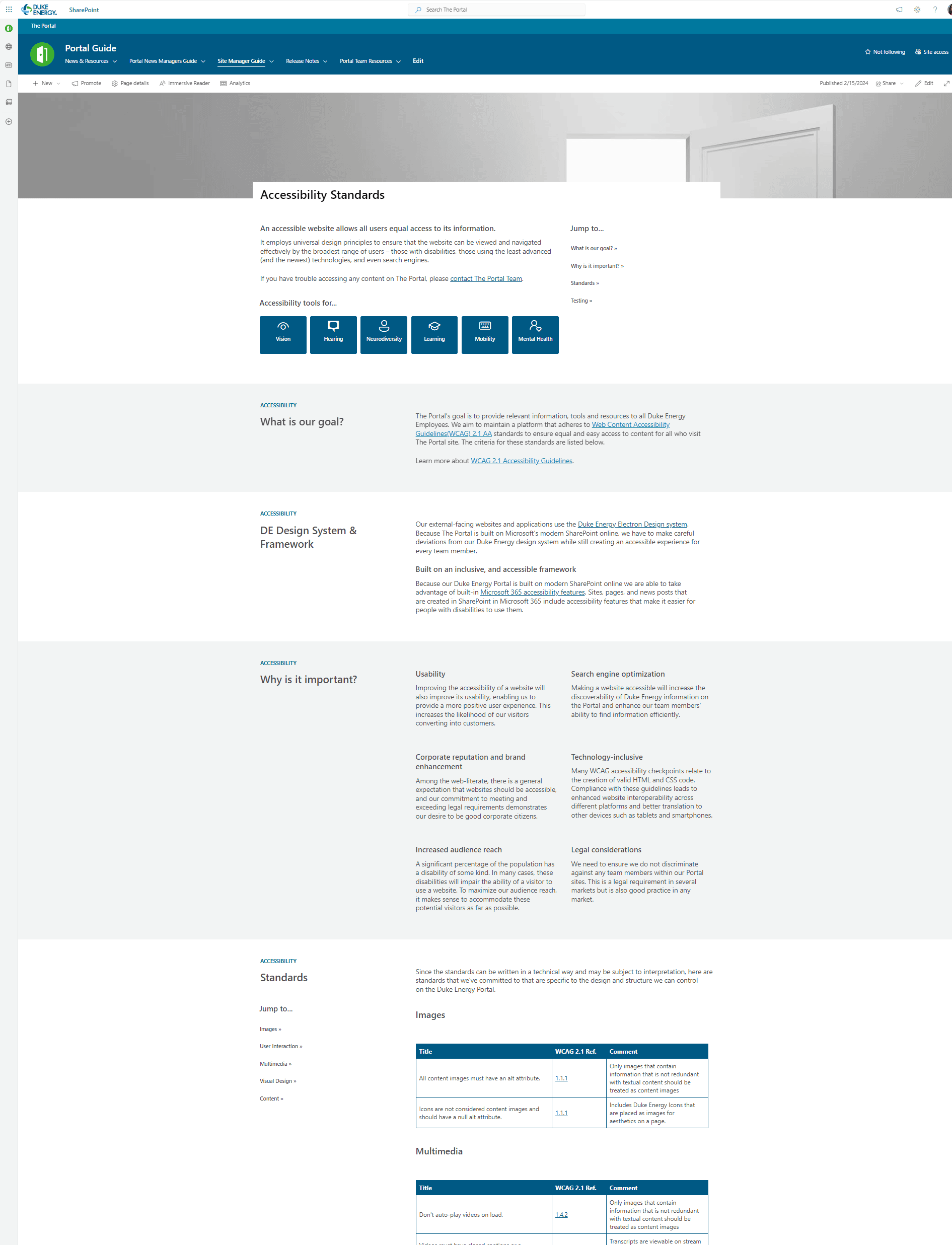
This guide for content authors and owners provides a detailed guide to meeting accessibility standards. Screenshot courtesy of Duke Energy.
In contrast, Cox Communications’ intranet provides a highly visual styleguide for corporate branding, designed to get authors quickly up to speed.
(There are more examples and guidance available in the article What does great intranet content look like?
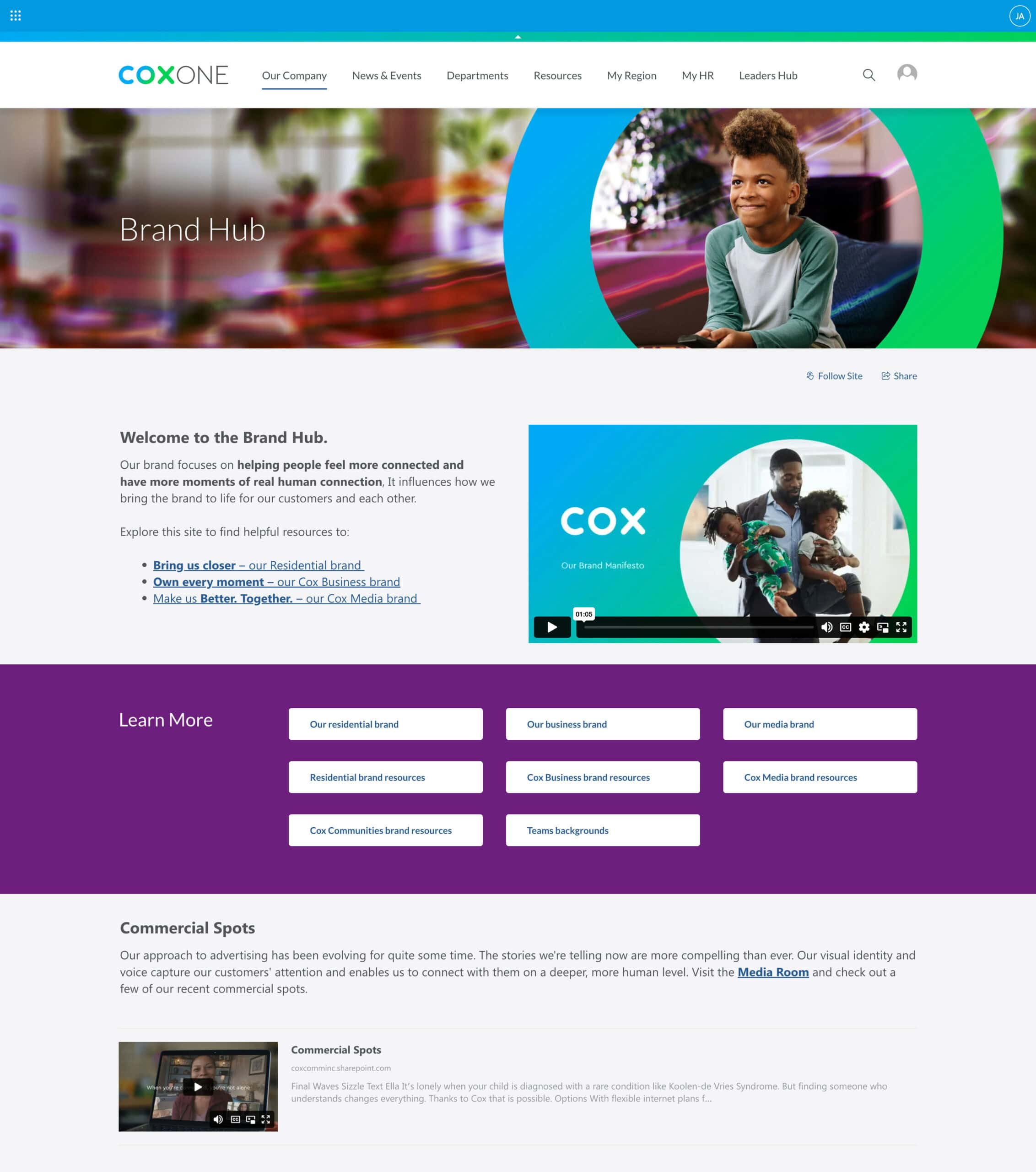
Resources for authors includes a highly visual brand hub. Screenshot courtesy of Cox Communications.
4. How to create and maintain pages
There are practical skills and knowledge that decentralised authors will need if they are to successfully create and update pages. These skills will depend on the underlying intranet platform, and in many cases they will be unfamiliar to authors in business areas.
Authors therefore need good ‘how to information’ on all aspects of content management, including:
- creating new pages
- using suitable templates
- laying out pages and using page components
- adding required metadata
- publishing pages, including workflow processes where used
- updating pages
- deleting pages
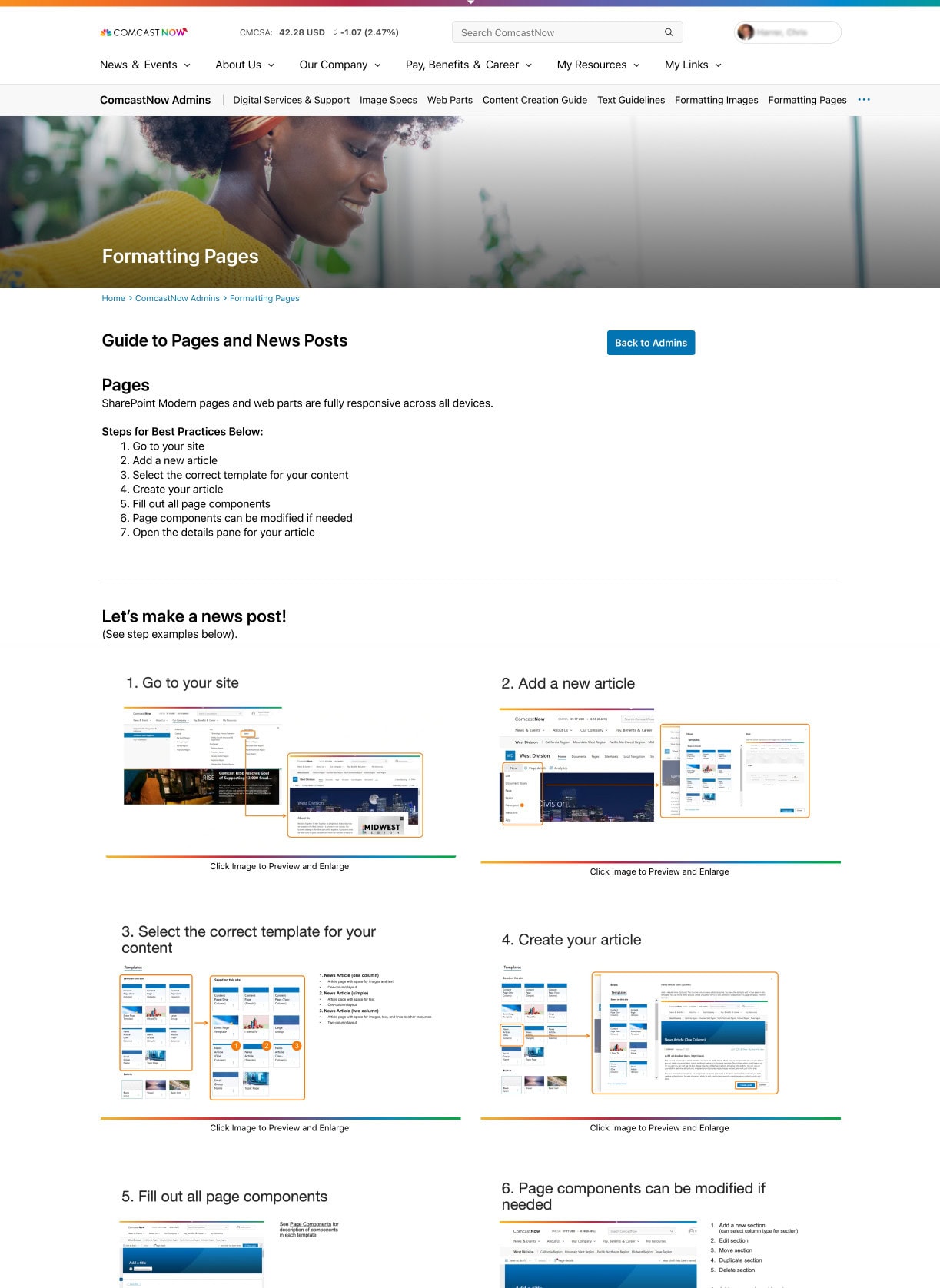
New authors of pages or news items are provided with a simple step-by-step guide to publishing. Screenshot courtesy of Comcast.

A more comprehensive content creation guide is provided to intranet authors. Screenshot courtesy of Comcast.
Guidance on how to publish pages may be provided in the form of support pages on the intranet (as shown above), or as part of an interactive e-learning module that authors are expected to complete before they start. Either way, place the focus on providing support and training, in as friendly and simple way as possible; rather than treating it as another opportunity to define standards and expectations.





